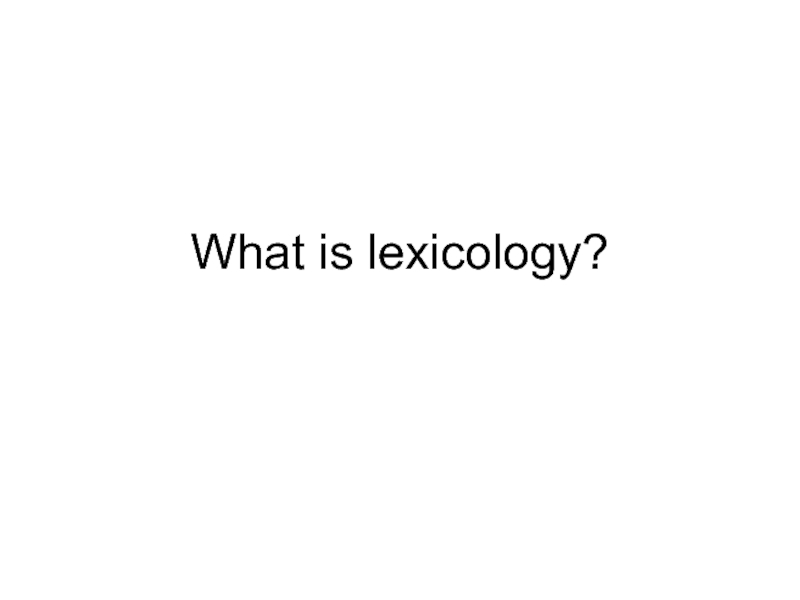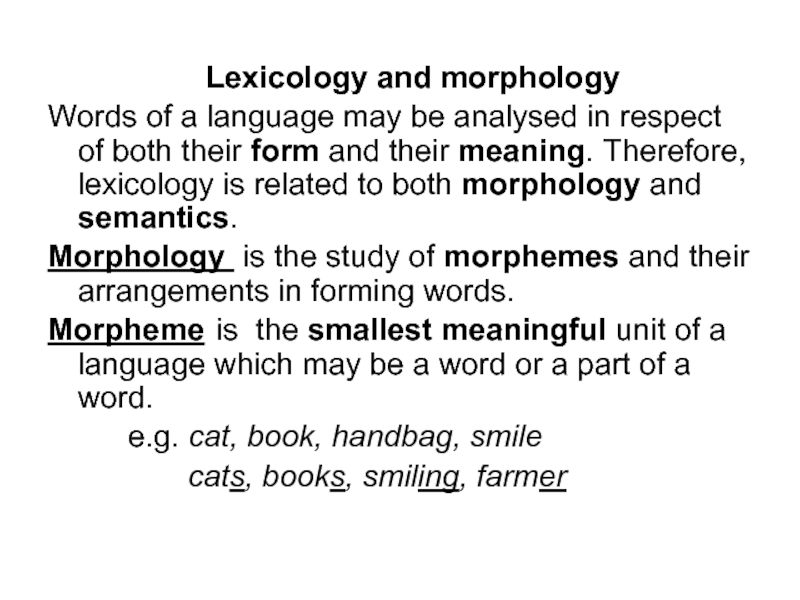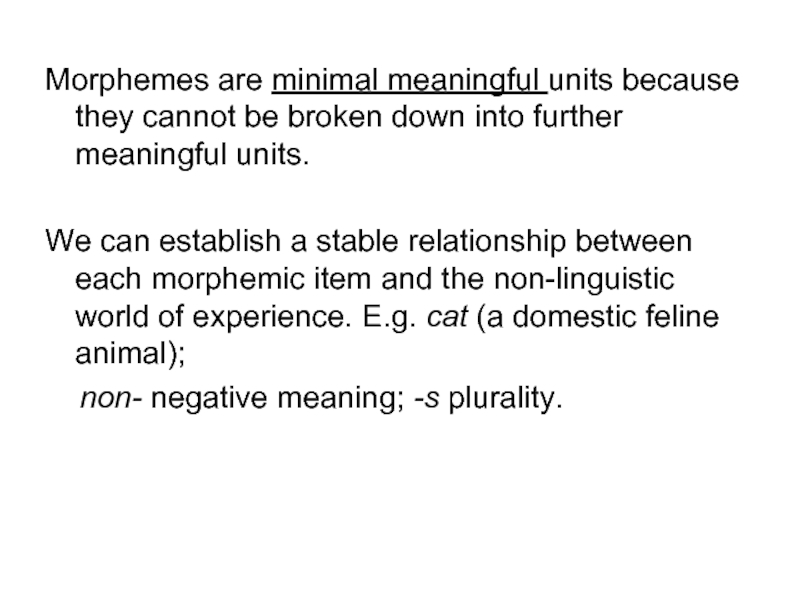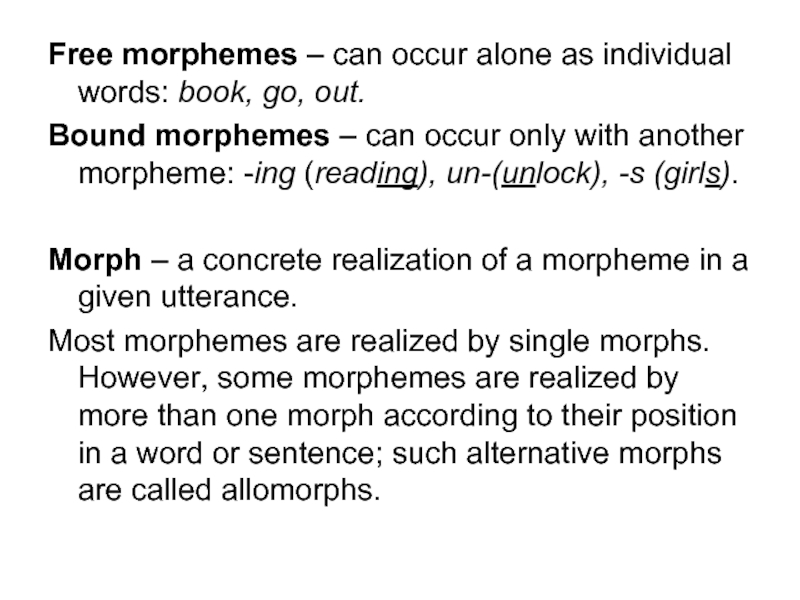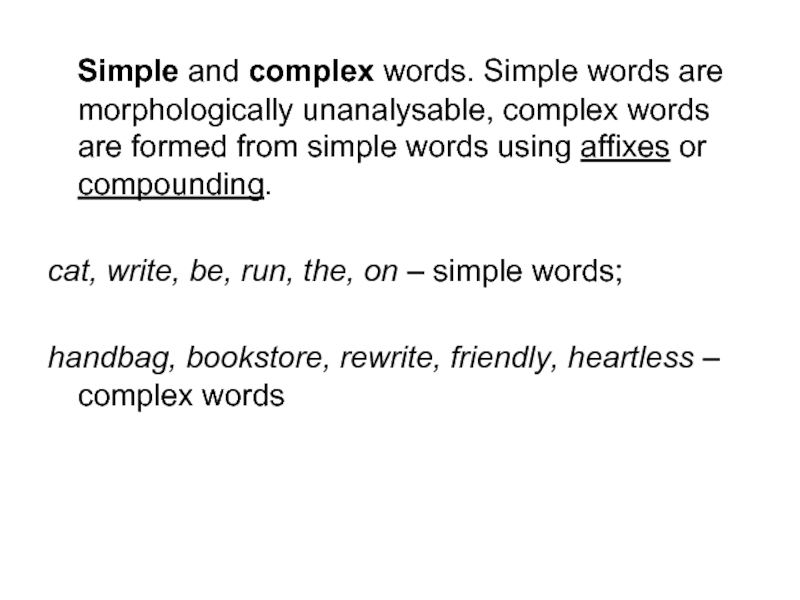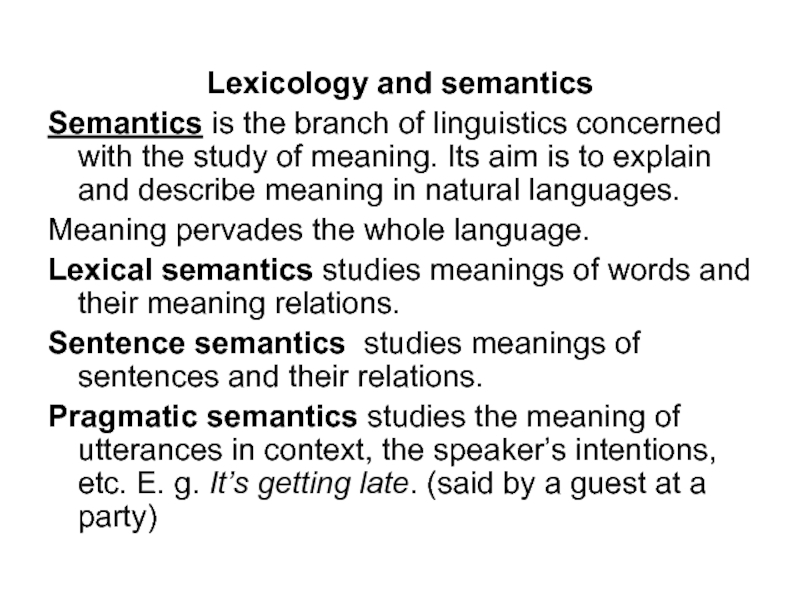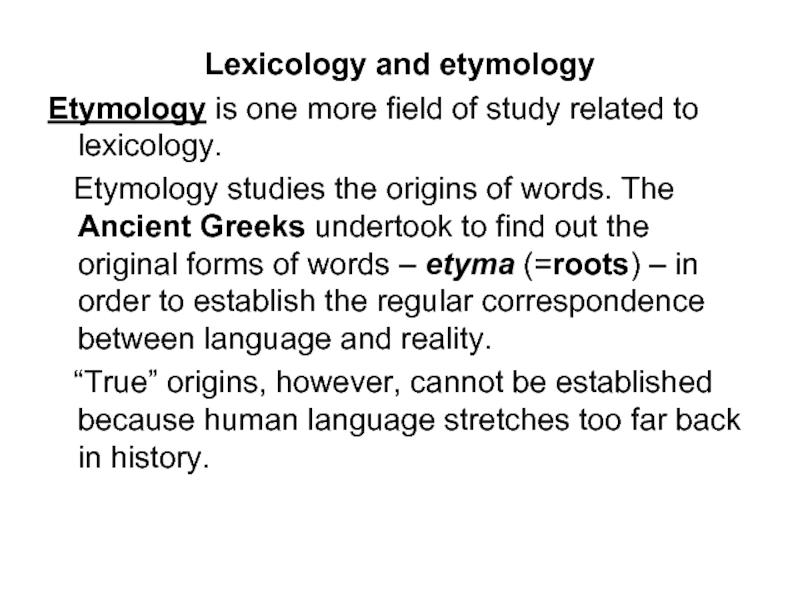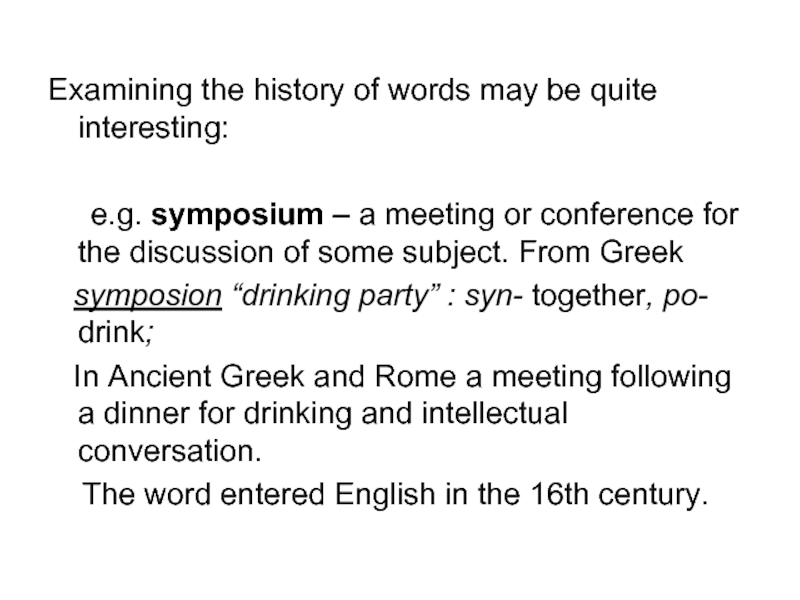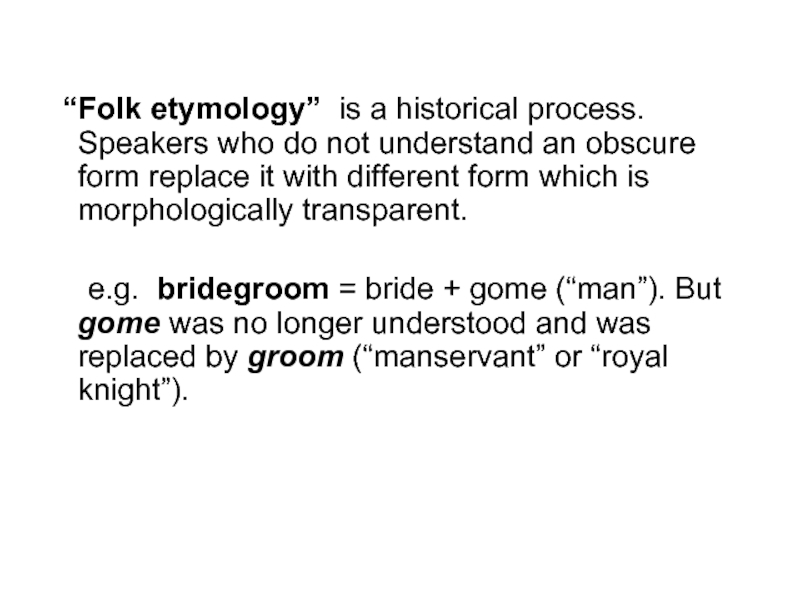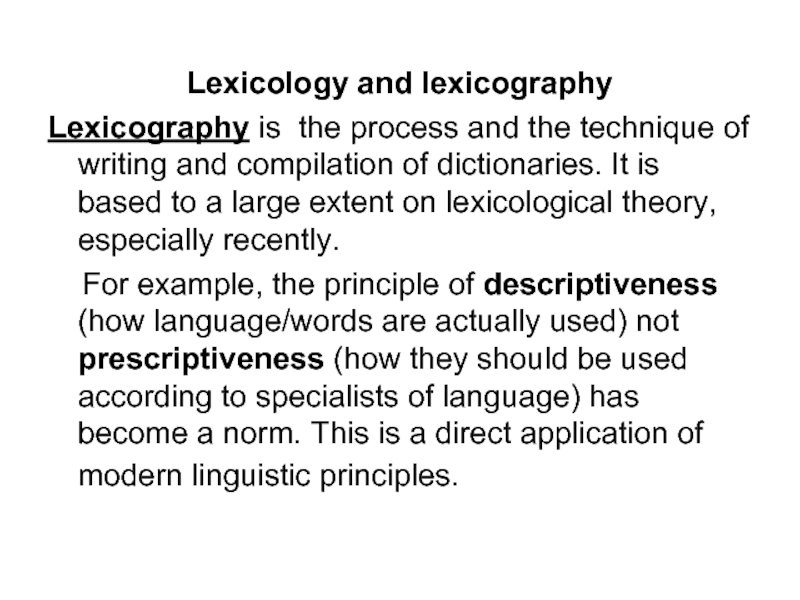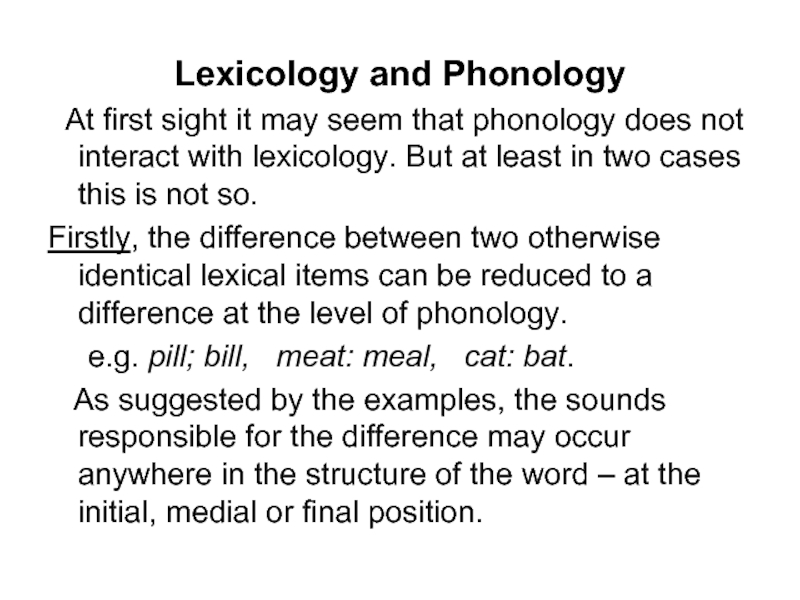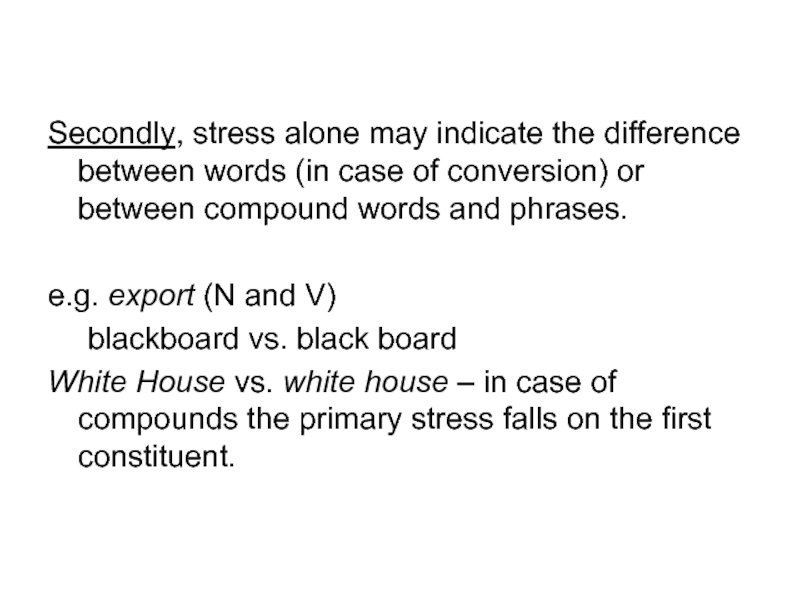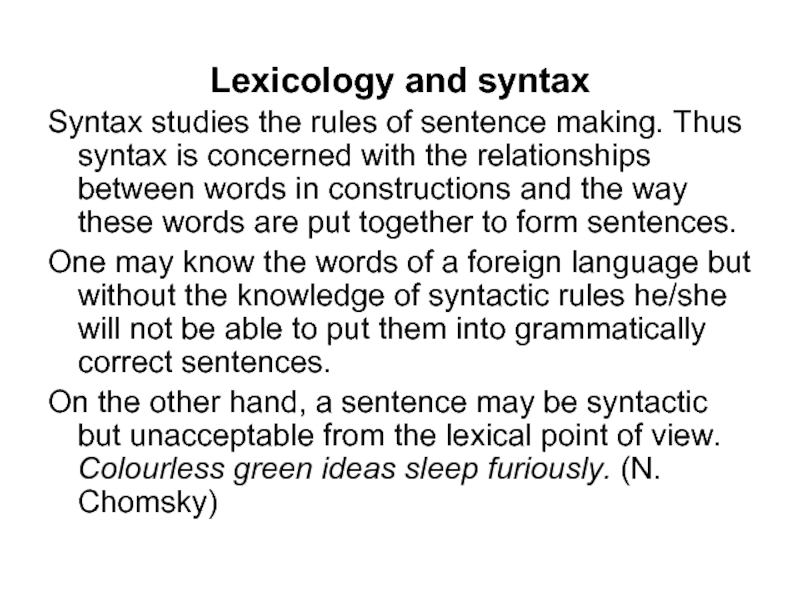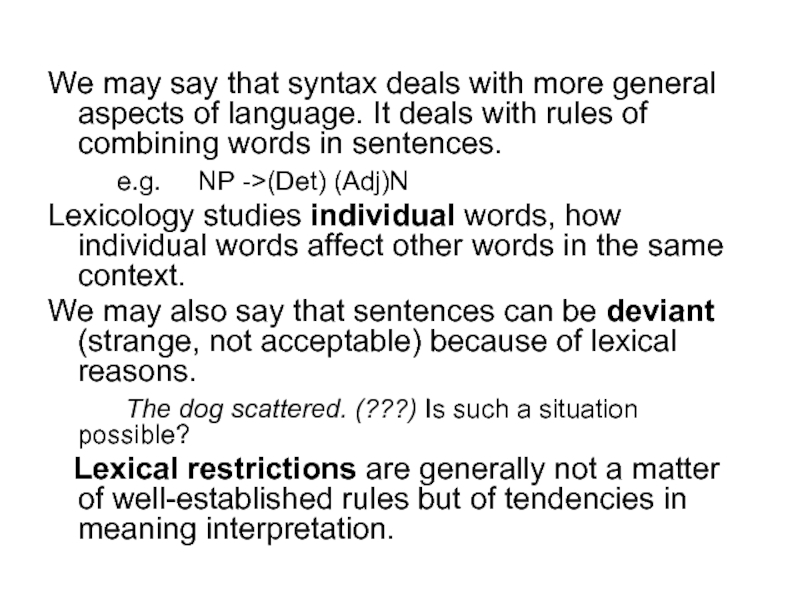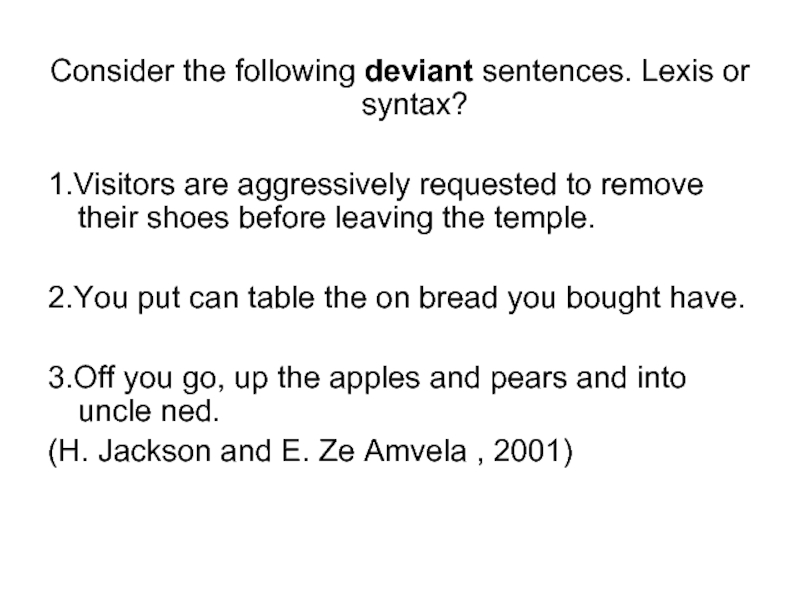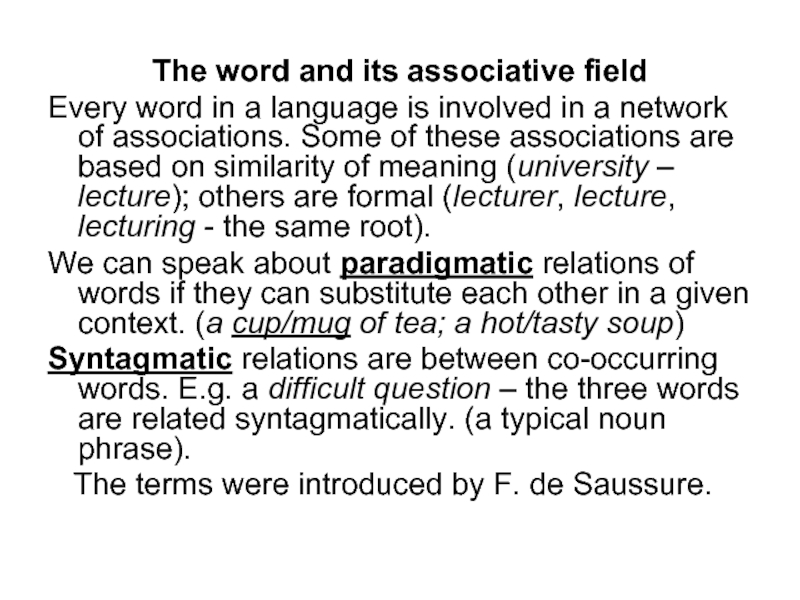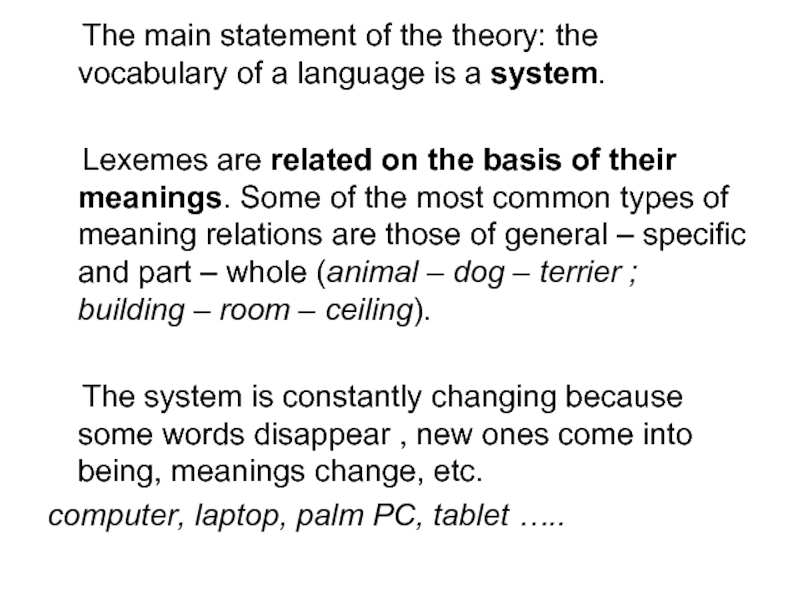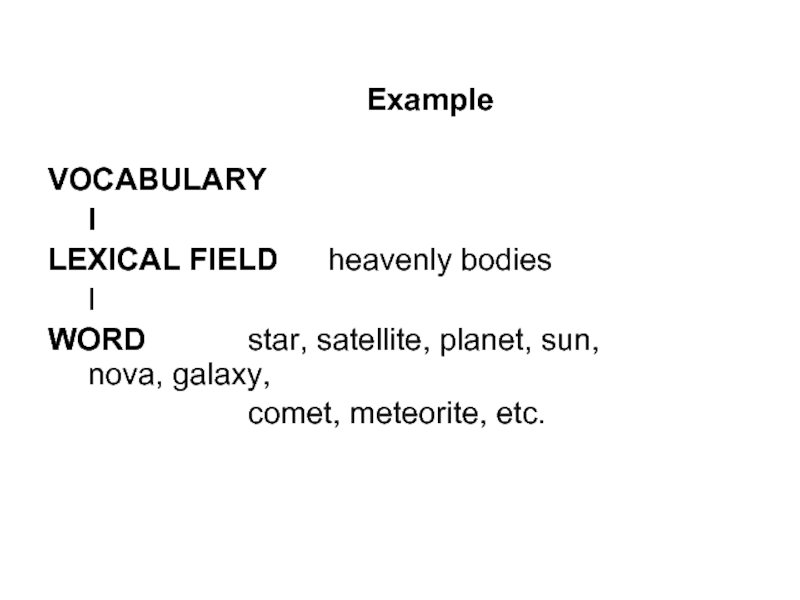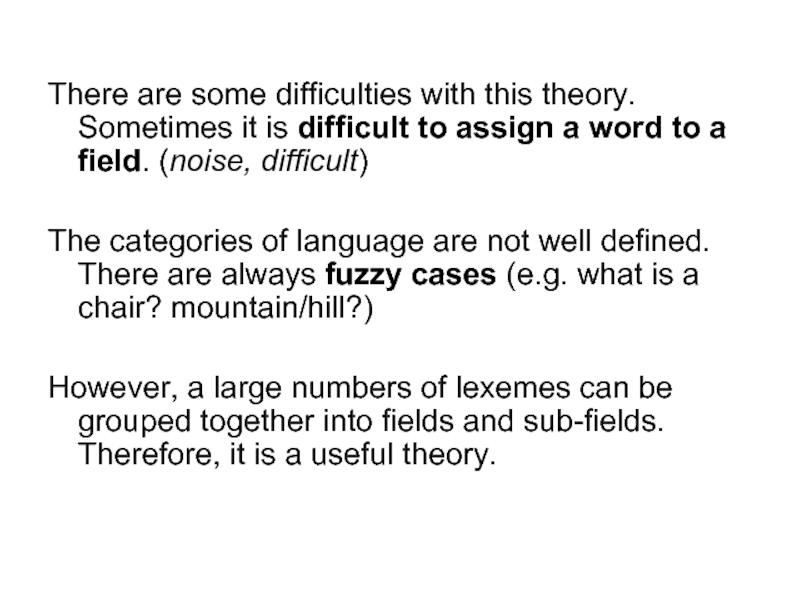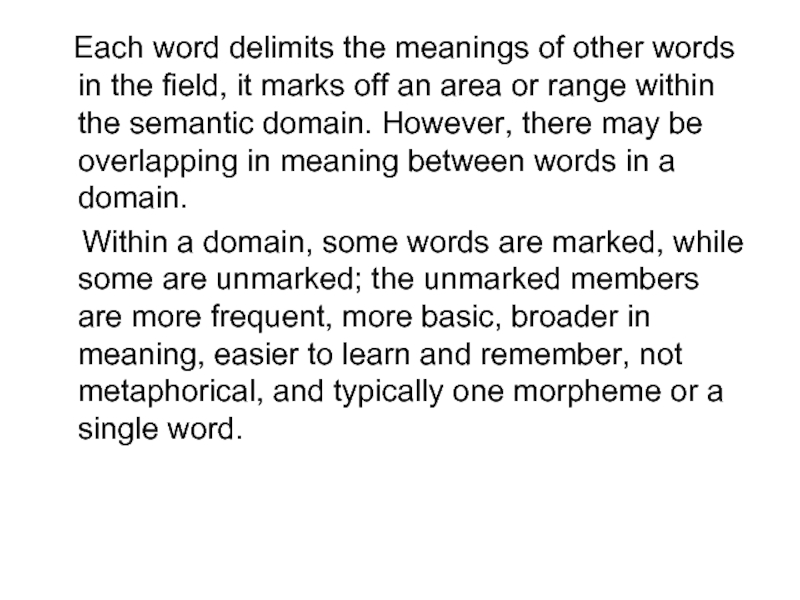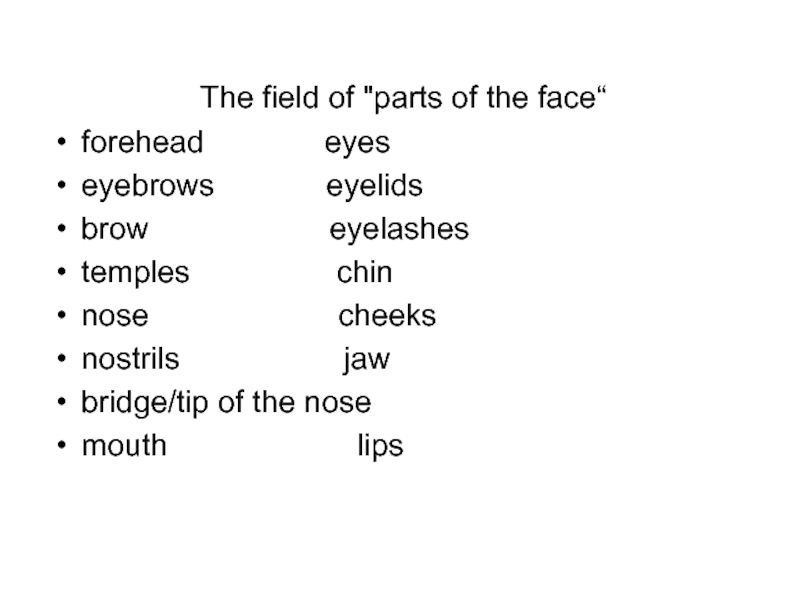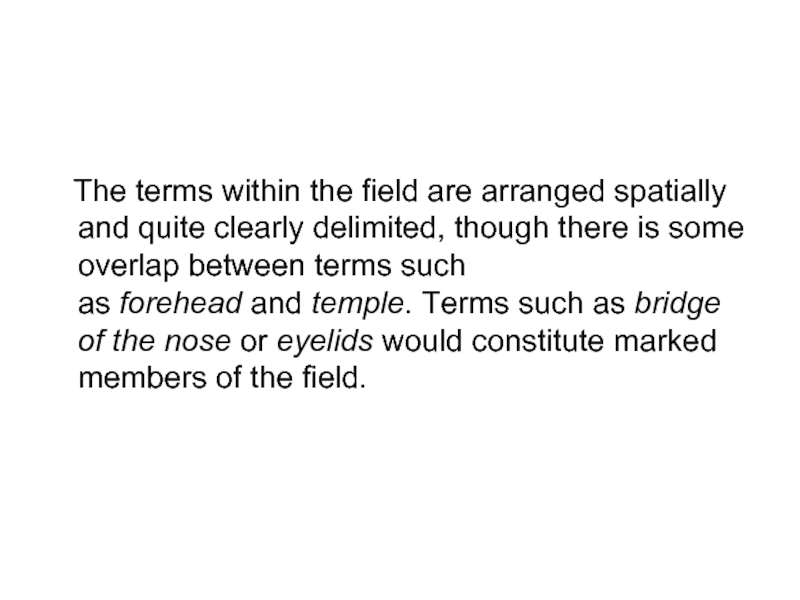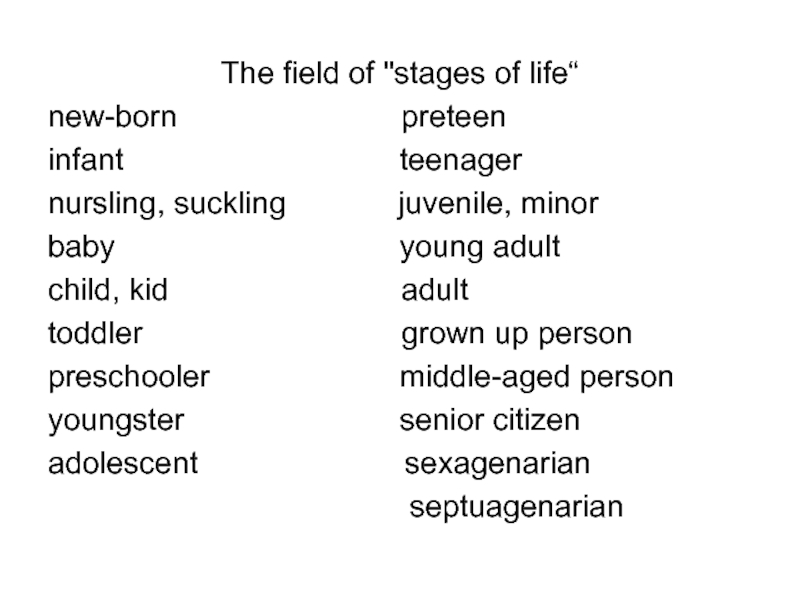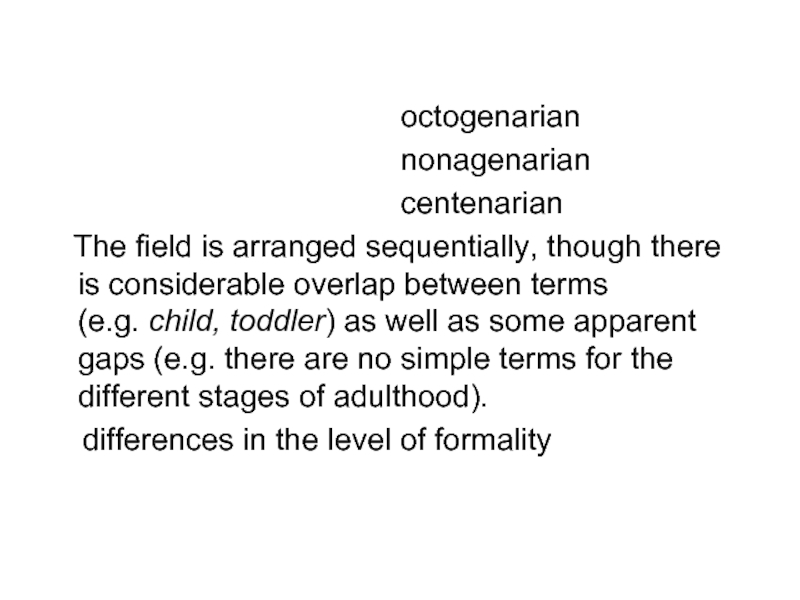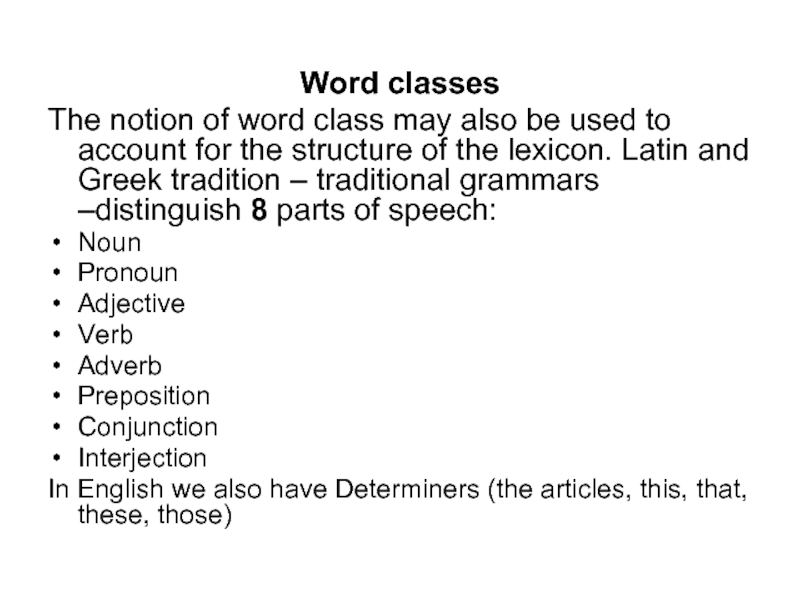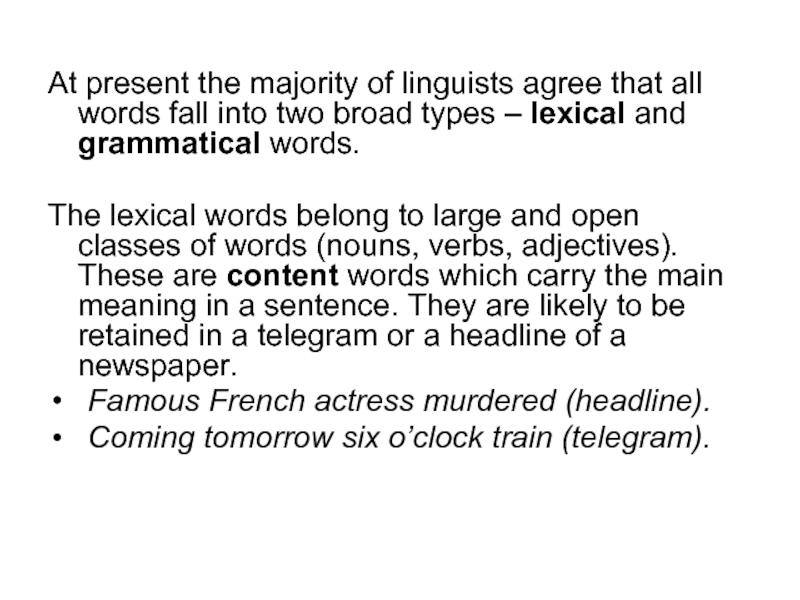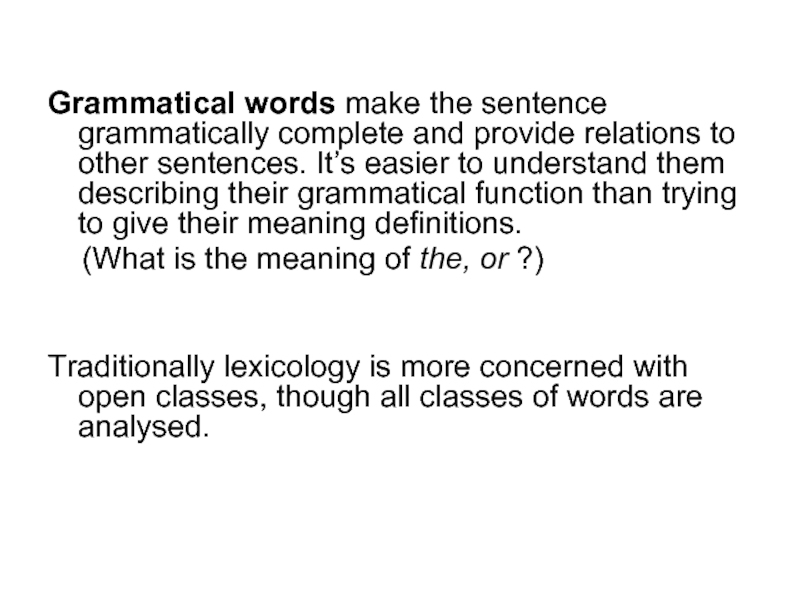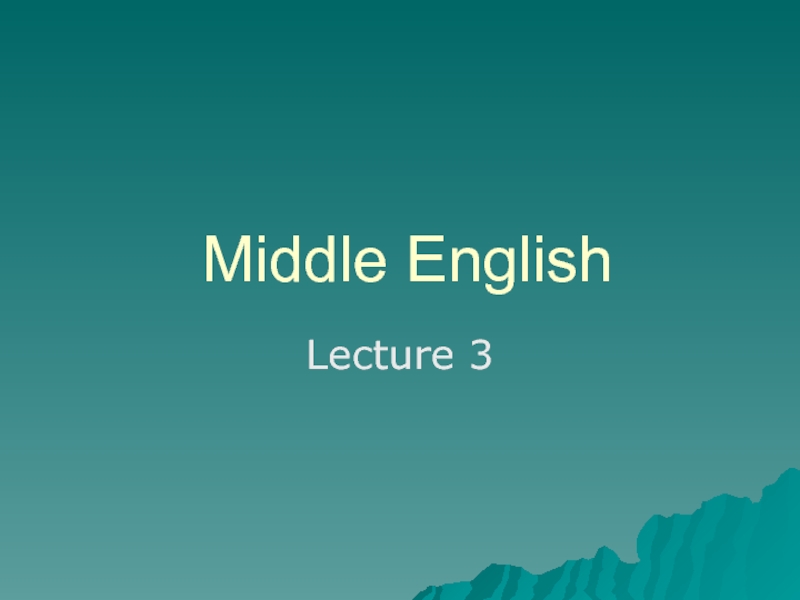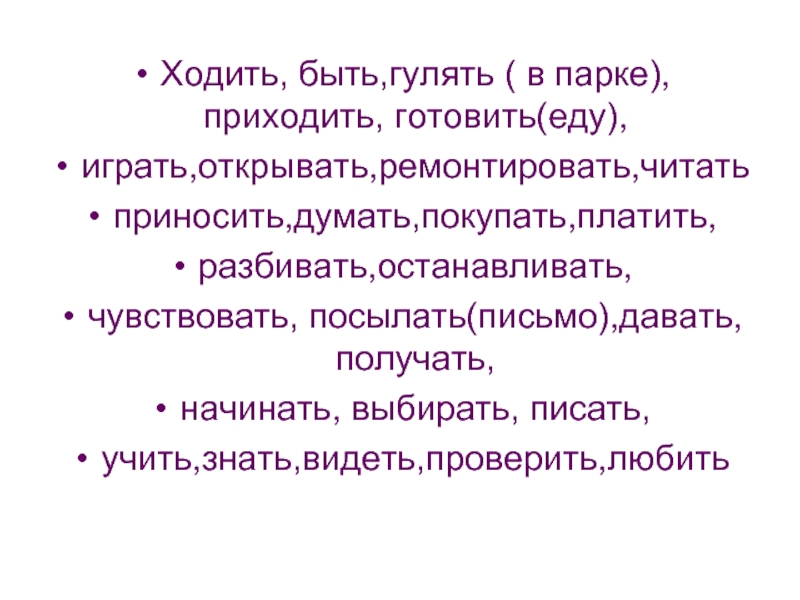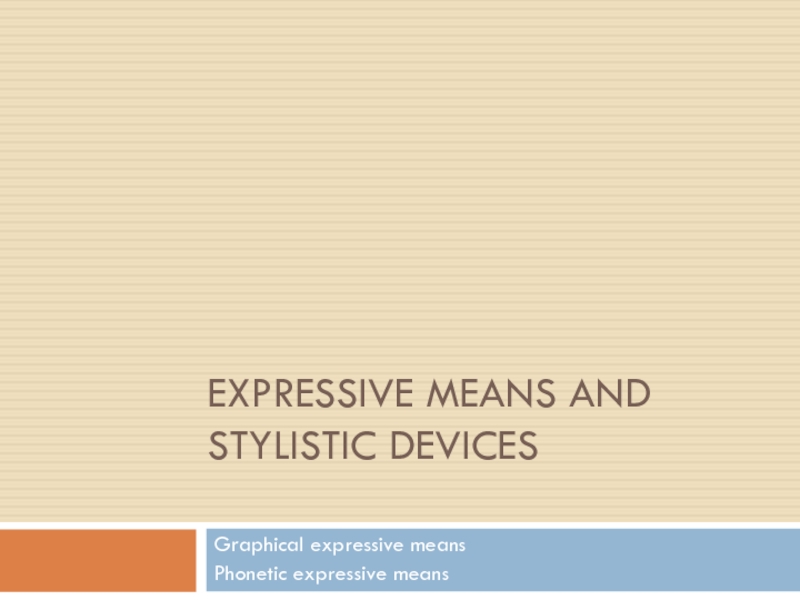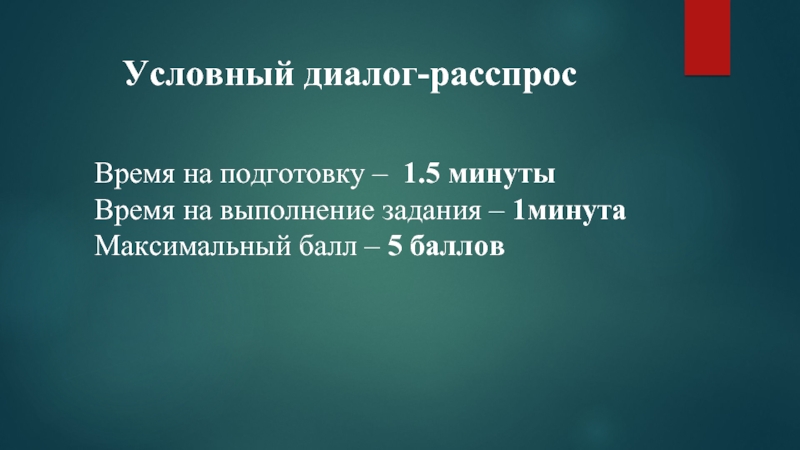- Главная
- Разное
- Дизайн
- Бизнес и предпринимательство
- Аналитика
- Образование
- Развлечения
- Красота и здоровье
- Финансы
- Государство
- Путешествия
- Спорт
- Недвижимость
- Армия
- Графика
- Культурология
- Еда и кулинария
- Лингвистика
- Английский язык
- Астрономия
- Алгебра
- Биология
- География
- Детские презентации
- Информатика
- История
- Литература
- Маркетинг
- Математика
- Медицина
- Менеджмент
- Музыка
- МХК
- Немецкий язык
- ОБЖ
- Обществознание
- Окружающий мир
- Педагогика
- Русский язык
- Технология
- Физика
- Философия
- Химия
- Шаблоны, картинки для презентаций
- Экология
- Экономика
- Юриспруденция
What is lexicology презентация
Содержание
- 1. What is lexicology
- 2. What is lexicology? Its relation with morphology,
- 3. Lexicology and morphology Words
- 4. Morphemes are minimal meaningful units because they
- 5. Free morphemes – can occur alone as
- 6. Allomorphs are different representations of
- 7. Simple and complex words. Simple
- 8. Lexicology and semantics Semantics is the branch
- 9. Lexicology and etymology Etymology is one more
- 10. Examining the history of words may be
- 11. Etymological information helps to determine
- 12. “Folk etymology”
- 13. Depart – used in wedding
- 14. Lexicology and lexicography Lexicography is the process
- 15. Lexicology and Phonology At first
- 16. Secondly, stress alone may indicate the
- 17. Lexicology and syntax Syntax studies the
- 18. We may say that syntax deals with
- 19. Consider the following deviant sentences. Lexis or
- 20. The word and its associative field Every
- 21. Lexical fields Lexical field (semantic field,
- 22. The main statement of the
- 23. Example
- 24. There are some difficulties with this
- 25. Each word delimits the meanings
- 26. The field of "parts of the face“
- 28. The field of "stages of life“ new-born
- 30. Word families Bauer and Nation (1993) Words
- 31. Word classes The notion of word class
- 32. Quirk et al. distinguish only 4 classes:
- 33. At present the majority of linguists agree
- 34. Grammatical words make the sentence grammatically
Слайд 2What is lexicology? Its relation with morphology, semantics and etymology
Lexicology is
a branch of linguistics concerned with the study of the meaning and use of words (the stock of words in a given language).
Vocabulary
Lexis (synonymous terms)
Lexicon
All the terms refer to the total word stock of a language.
Dictionary (only a selective recording of the word stock of a language at a given point of time).
Vocabulary
Lexis (synonymous terms)
Lexicon
All the terms refer to the total word stock of a language.
Dictionary (only a selective recording of the word stock of a language at a given point of time).
Слайд 3 Lexicology and morphology
Words of a language may be
analysed in respect of both their form and their meaning. Therefore, lexicology is related to both morphology and semantics.
Morphology is the study of morphemes and their arrangements in forming words.
Morpheme is the smallest meaningful unit of a language which may be a word or a part of a word.
e.g. cat, book, handbag, smile
cats, books, smiling, farmer
Morphology is the study of morphemes and their arrangements in forming words.
Morpheme is the smallest meaningful unit of a language which may be a word or a part of a word.
e.g. cat, book, handbag, smile
cats, books, smiling, farmer
Слайд 4Morphemes are minimal meaningful units because they cannot be broken down
into further meaningful units.
We can establish a stable relationship between each morphemic item and the non-linguistic world of experience. E.g. cat (a domestic feline animal);
non- negative meaning; -s plurality.
We can establish a stable relationship between each morphemic item and the non-linguistic world of experience. E.g. cat (a domestic feline animal);
non- negative meaning; -s plurality.
Слайд 5Free morphemes – can occur alone as individual words: book, go,
out.
Bound morphemes – can occur only with another morpheme: -ing (reading), un-(unlock), -s (girls).
Morph – a concrete realization of a morpheme in a given utterance.
Most morphemes are realized by single morphs. However, some morphemes are realized by more than one morph according to their position in a word or sentence; such alternative morphs are called allomorphs.
Bound morphemes – can occur only with another morpheme: -ing (reading), un-(unlock), -s (girls).
Morph – a concrete realization of a morpheme in a given utterance.
Most morphemes are realized by single morphs. However, some morphemes are realized by more than one morph according to their position in a word or sentence; such alternative morphs are called allomorphs.
Слайд 6 Allomorphs are different representations of the same morphemes that
are mutually exclusive and in complementary distribution, i.e., they do not appear in the same environment.
(distribution – a total set of contexts in which a linguistic element may occur).
The forms of the indefinite article (a and an) are allomorphs.
The prefixes im- and il- are allomorphs having the same negative meaning (immoral and illegal)
(m is used before root beginning with m with and l before root beginning with l )
(distribution – a total set of contexts in which a linguistic element may occur).
The forms of the indefinite article (a and an) are allomorphs.
The prefixes im- and il- are allomorphs having the same negative meaning (immoral and illegal)
(m is used before root beginning with m with and l before root beginning with l )
Слайд 7 Simple and complex words. Simple words are morphologically unanalysable,
complex words are formed from simple words using affixes or compounding.
cat, write, be, run, the, on – simple words;
handbag, bookstore, rewrite, friendly, heartless – complex words
cat, write, be, run, the, on – simple words;
handbag, bookstore, rewrite, friendly, heartless – complex words
Слайд 8Lexicology and semantics
Semantics is the branch of linguistics concerned with the
study of meaning. Its aim is to explain and describe meaning in natural languages.
Meaning pervades the whole language.
Lexical semantics studies meanings of words and their meaning relations.
Sentence semantics studies meanings of sentences and their relations.
Pragmatic semantics studies the meaning of utterances in context, the speaker’s intentions, etc. E. g. It’s getting late. (said by a guest at a party)
Meaning pervades the whole language.
Lexical semantics studies meanings of words and their meaning relations.
Sentence semantics studies meanings of sentences and their relations.
Pragmatic semantics studies the meaning of utterances in context, the speaker’s intentions, etc. E. g. It’s getting late. (said by a guest at a party)
Слайд 9Lexicology and etymology
Etymology is one more field of study related to
lexicology.
Etymology studies the origins of words. The Ancient Greeks undertook to find out the original forms of words – etyma (=roots) – in order to establish the regular correspondence between language and reality.
“True” origins, however, cannot be established because human language stretches too far back in history.
Etymology studies the origins of words. The Ancient Greeks undertook to find out the original forms of words – etyma (=roots) – in order to establish the regular correspondence between language and reality.
“True” origins, however, cannot be established because human language stretches too far back in history.
Слайд 10Examining the history of words may be quite interesting:
e.g. symposium – a meeting or conference for the discussion of some subject. From Greek
symposion “drinking party” : syn- together, po- drink;
In Ancient Greek and Rome a meeting following a dinner for drinking and intellectual conversation.
The word entered English in the 16th century.
symposion “drinking party” : syn- together, po- drink;
In Ancient Greek and Rome a meeting following a dinner for drinking and intellectual conversation.
The word entered English in the 16th century.
Слайд 11 Etymological information helps to determine cognates – words related
in form (and meaning) in other languages.
e.g. father (English) and der Vater (German);
the Sun (English) and di Sonne (German).
It also helps to determine borrowings , i.e. words that were taken from other languages. Finally, it gives any other information on the previous history of the word (its etymology).
e.g. autumn ( volcano (< Italian < Latin);
jungle (
e.g. father (English) and der Vater (German);
the Sun (English) and di Sonne (German).
It also helps to determine borrowings , i.e. words that were taken from other languages. Finally, it gives any other information on the previous history of the word (its etymology).
e.g. autumn (
jungle (
Слайд 12
“Folk etymology” is a historical process. Speakers who
do not understand an obscure form replace it with different form which is morphologically transparent.
e.g. bridegroom = bride + gome (“man”). But gome was no longer understood and was replaced by groom (“manservant” or “royal knight”).
e.g. bridegroom = bride + gome (“man”). But gome was no longer understood and was replaced by groom (“manservant” or “royal knight”).
Слайд 13 Depart – used in wedding ceremonies meaning “to separate”
in the expression till death us depart.
Later the word was analysed and understood as do part.
Hamburger is from Hamburg (a city) but was analysed by the English speakers into ham and burger (there is no such word).
Thus new words like cheeseburger later appeared.
Later the word was analysed and understood as do part.
Hamburger is from Hamburg (a city) but was analysed by the English speakers into ham and burger (there is no such word).
Thus new words like cheeseburger later appeared.
Слайд 14Lexicology and lexicography
Lexicography is the process and the technique of writing
and compilation of dictionaries. It is based to a large extent on lexicological theory, especially recently.
For example, the principle of descriptiveness (how language/words are actually used) not prescriptiveness (how they should be used according to specialists of language) has become a norm. This is a direct application of modern linguistic principles.
For example, the principle of descriptiveness (how language/words are actually used) not prescriptiveness (how they should be used according to specialists of language) has become a norm. This is a direct application of modern linguistic principles.
Слайд 15Lexicology and Phonology
At first sight it may seem that
phonology does not interact with lexicology. But at least in two cases this is not so.
Firstly, the difference between two otherwise identical lexical items can be reduced to a difference at the level of phonology.
e.g. pill; bill, meat: meal, cat: bat.
As suggested by the examples, the sounds responsible for the difference may occur anywhere in the structure of the word – at the initial, medial or final position.
Firstly, the difference between two otherwise identical lexical items can be reduced to a difference at the level of phonology.
e.g. pill; bill, meat: meal, cat: bat.
As suggested by the examples, the sounds responsible for the difference may occur anywhere in the structure of the word – at the initial, medial or final position.
Слайд 16
Secondly, stress alone may indicate the difference between words (in case
of conversion) or between compound words and phrases.
e.g. export (N and V)
blackboard vs. black board
White House vs. white house – in case of compounds the primary stress falls on the first constituent.
e.g. export (N and V)
blackboard vs. black board
White House vs. white house – in case of compounds the primary stress falls on the first constituent.
Слайд 17Lexicology and syntax
Syntax studies the rules of sentence making. Thus
syntax is concerned with the relationships between words in constructions and the way these words are put together to form sentences.
One may know the words of a foreign language but without the knowledge of syntactic rules he/she will not be able to put them into grammatically correct sentences.
On the other hand, a sentence may be syntactic but unacceptable from the lexical point of view. Colourless green ideas sleep furiously. (N. Chomsky)
One may know the words of a foreign language but without the knowledge of syntactic rules he/she will not be able to put them into grammatically correct sentences.
On the other hand, a sentence may be syntactic but unacceptable from the lexical point of view. Colourless green ideas sleep furiously. (N. Chomsky)
Слайд 18We may say that syntax deals with more general aspects of
language. It deals with rules of combining words in sentences.
e.g. NP ->(Det) (Adj)N
Lexicology studies individual words, how individual words affect other words in the same context.
We may also say that sentences can be deviant (strange, not acceptable) because of lexical reasons.
The dog scattered. (???) Is such a situation possible?
Lexical restrictions are generally not a matter of well-established rules but of tendencies in meaning interpretation.
e.g. NP ->(Det) (Adj)N
Lexicology studies individual words, how individual words affect other words in the same context.
We may also say that sentences can be deviant (strange, not acceptable) because of lexical reasons.
The dog scattered. (???) Is such a situation possible?
Lexical restrictions are generally not a matter of well-established rules but of tendencies in meaning interpretation.
Слайд 19Consider the following deviant sentences. Lexis or syntax?
1.Visitors are aggressively requested
to remove their shoes before leaving the temple.
2.You put can table the on bread you bought have.
3.Off you go, up the apples and pears and into uncle ned.
(H. Jackson and E. Ze Amvela , 2001)
2.You put can table the on bread you bought have.
3.Off you go, up the apples and pears and into uncle ned.
(H. Jackson and E. Ze Amvela , 2001)
Слайд 20The word and its associative field
Every word in a language is
involved in a network of associations. Some of these associations are based on similarity of meaning (university – lecture); others are formal (lecturer, lecture, lecturing - the same root).
We can speak about paradigmatic relations of words if they can substitute each other in a given context. (a cup/mug of tea; a hot/tasty soup)
Syntagmatic relations are between co-occurring words. E.g. a difficult question – the three words are related syntagmatically. (a typical noun phrase).
The terms were introduced by F. de Saussure.
We can speak about paradigmatic relations of words if they can substitute each other in a given context. (a cup/mug of tea; a hot/tasty soup)
Syntagmatic relations are between co-occurring words. E.g. a difficult question – the three words are related syntagmatically. (a typical noun phrase).
The terms were introduced by F. de Saussure.
Слайд 21Lexical fields
Lexical field (semantic field, semantic domain) is an area of
meaning in which lexemes interrelate and define each other in specific ways from the point of view of their meaning.
E.g. kinship terms, colour terms, military ranks.
Field theory was introduced in 1920s and 1930s by Swiss and German linguists. But some ideas come from philosophers Humboldt and Herder (the 19th century).
Lexemes are related on the basis of their meanings.
E.g. kinship terms, colour terms, military ranks.
Field theory was introduced in 1920s and 1930s by Swiss and German linguists. But some ideas come from philosophers Humboldt and Herder (the 19th century).
Lexemes are related on the basis of their meanings.
Слайд 22 The main statement of the theory: the vocabulary of
a language is a system.
Lexemes are related on the basis of their meanings. Some of the most common types of meaning relations are those of general – specific and part – whole (animal – dog – terrier ; building – room – ceiling).
The system is constantly changing because some words disappear , new ones come into being, meanings change, etc.
computer, laptop, palm PC, tablet …..
Lexemes are related on the basis of their meanings. Some of the most common types of meaning relations are those of general – specific and part – whole (animal – dog – terrier ; building – room – ceiling).
The system is constantly changing because some words disappear , new ones come into being, meanings change, etc.
computer, laptop, palm PC, tablet …..
Слайд 23
Example
VOCABULARY
I
LEXICAL FIELD heavenly bodies
I
WORD star, satellite, planet, sun,
nova, galaxy,
comet, meteorite, etc.
comet, meteorite, etc.
Слайд 24
There are some difficulties with this theory. Sometimes it is difficult
to assign a word to a field. (noise, difficult)
The categories of language are not well defined. There are always fuzzy cases (e.g. what is a chair? mountain/hill?)
However, a large numbers of lexemes can be grouped together into fields and sub-fields. Therefore, it is a useful theory.
The categories of language are not well defined. There are always fuzzy cases (e.g. what is a chair? mountain/hill?)
However, a large numbers of lexemes can be grouped together into fields and sub-fields. Therefore, it is a useful theory.
Слайд 25 Each word delimits the meanings of other words in
the field, it marks off an area or range within the semantic domain. However, there may be overlapping in meaning between words in a domain.
Within a domain, some words are marked, while some are unmarked; the unmarked members are more frequent, more basic, broader in meaning, easier to learn and remember, not metaphorical, and typically one morpheme or a single word.
Within a domain, some words are marked, while some are unmarked; the unmarked members are more frequent, more basic, broader in meaning, easier to learn and remember, not metaphorical, and typically one morpheme or a single word.
Слайд 26The field of "parts of the face“
forehead
eyes
eyebrows eyelids
brow eyelashes
temples chin
nose cheeks
nostrils jaw
bridge/tip of the nose
mouth lips
eyebrows eyelids
brow eyelashes
temples chin
nose cheeks
nostrils jaw
bridge/tip of the nose
mouth lips
Слайд 27
The terms within the field are arranged
spatially and quite clearly delimited, though there is some overlap between terms such as forehead and temple. Terms such as bridge of the nose or eyelids would constitute marked members of the field.
Слайд 28The field of "stages of life“
new-born
preteen
infant teenager
nursling, suckling juvenile, minor
baby young adult
child, kid adult
toddler grown up person
preschooler middle-aged person
youngster senior citizen
adolescent sexagenarian
septuagenarian
infant teenager
nursling, suckling juvenile, minor
baby young adult
child, kid adult
toddler grown up person
preschooler middle-aged person
youngster senior citizen
adolescent sexagenarian
septuagenarian
Слайд 29
octogenarian
nonagenarian
centenarian
The field is arranged sequentially, though there is considerable overlap between terms (e.g. child, toddler) as well as some apparent gaps (e.g. there are no simple terms for the different stages of adulthood).
differences in the level of formality
Слайд 30Word families
Bauer and Nation (1993)
Words are grouped into “families” on the
basis of their morphological structure, including inflections and derivational affixes.
A family consists of a base form, its inflectional forms and word derived from it by affixation.
Families are divided into levels. The levels are distinguished on the basis of the frequency, productivity, regularity and predictability of affixes.
e.g. –er is more frequent than –ist (communist, violinist).
Frequency is determined using computer corpus.
This theory is useful in language teaching and lexicography.
A family consists of a base form, its inflectional forms and word derived from it by affixation.
Families are divided into levels. The levels are distinguished on the basis of the frequency, productivity, regularity and predictability of affixes.
e.g. –er is more frequent than –ist (communist, violinist).
Frequency is determined using computer corpus.
This theory is useful in language teaching and lexicography.
Слайд 31Word classes
The notion of word class may also be used to
account for the structure of the lexicon. Latin and Greek tradition – traditional grammars –distinguish 8 parts of speech:
Noun
Pronoun
Adjective
Verb
Adverb
Preposition
Conjunction
Interjection
In English we also have Determiners (the articles, this, that, these, those)
Noun
Pronoun
Adjective
Verb
Adverb
Preposition
Conjunction
Interjection
In English we also have Determiners (the articles, this, that, these, those)
Слайд 32Quirk et al. distinguish only 4 classes:
closed classes: preposition, pronoun determiner,
conjunction, auxiliary verb – there’s a limited number of them and it does not change ( or change very slowly – thou and thee have been lost for about 3 hundred years).
open classes: noun, adjective, verb, adverb – their membership is not stable since some words fall out of use and some new words appear;
lesser categories: numeral, interjection;
a small number of words of unique function: the particle not and the infinitive marker to.
open classes: noun, adjective, verb, adverb – their membership is not stable since some words fall out of use and some new words appear;
lesser categories: numeral, interjection;
a small number of words of unique function: the particle not and the infinitive marker to.
Слайд 33At present the majority of linguists agree that all words fall
into two broad types – lexical and grammatical words.
The lexical words belong to large and open classes of words (nouns, verbs, adjectives). These are content words which carry the main meaning in a sentence. They are likely to be retained in a telegram or a headline of a newspaper.
Famous French actress murdered (headline).
Coming tomorrow six o’clock train (telegram).
The lexical words belong to large and open classes of words (nouns, verbs, adjectives). These are content words which carry the main meaning in a sentence. They are likely to be retained in a telegram or a headline of a newspaper.
Famous French actress murdered (headline).
Coming tomorrow six o’clock train (telegram).
Слайд 34
Grammatical words make the sentence grammatically complete and provide relations to
other sentences. It’s easier to understand them describing their grammatical function than trying to give their meaning definitions.
(What is the meaning of the, or ?)
Traditionally lexicology is more concerned with open classes, though all classes of words are analysed.
(What is the meaning of the, or ?)
Traditionally lexicology is more concerned with open classes, though all classes of words are analysed.
